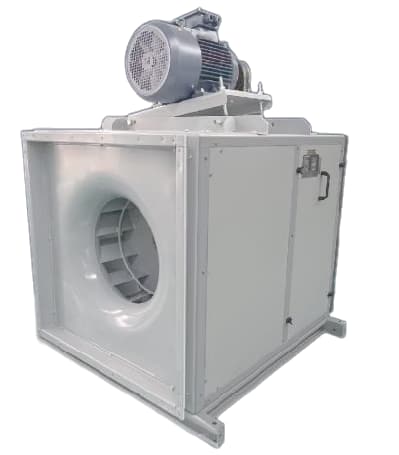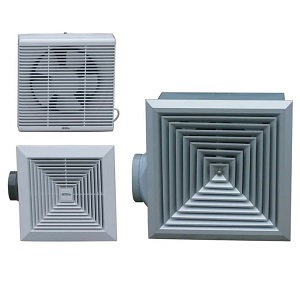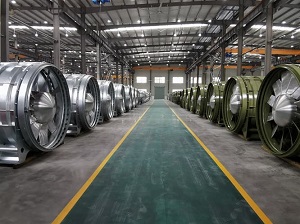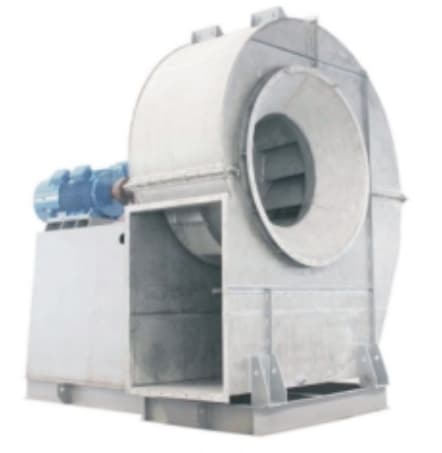Pressurization in High-Rise Safety: The Role of Staircase Pressurization Fans
In modern building safety design, staircases are not just architectural elements—they are vital emergency egress paths. During fire incidents, smoke poses the greatest threat to safe evacuation. That's where staircase pressurization fans come in. These systems, often integrated into building fire protection designs, ensure stairwells remain smoke-free and accessible when they are needed most.
At SHUANGYANG FAN, we design and manufacture a range of staircase pressurization fans engineered for life safety, compliance, and efficient performance. Whether installed in high-rise buildings, hotels, hospitals, or commercial complexes, our solutions meet the strict demands of local fire codes and international standards.
Staircase Pressurization Systems
Staircase pressurization is a smoke control strategy used in tall or complex buildings. In the event of a fire, fans pressurize the stairwells, creating a positive air pressure that prevents smoke from infiltrating evacuation routes. This makes it possible for occupants to escape and for rescue personnel to access the affected areas safely.
Unlike general ventilation systems, pressurization fans must be highly responsive, temperature-resistant, and reliable under emergency conditions.
What Makes Staircase Pressurization Fans Unique?
1. High Static Pressure Capabilities
Unlike general exhaust or supply fans, pressurization fans operate against significant back pressure due to closed doors and shaft resistance. Manufacturers are engineered to deliver high static pressures (typically over 500 Pa) while maintaining stable airflow, even when multiple doors are closed.
2. Temperature and Fire Resistance
Pressurization fans must function in elevated temperatures during fire events. These fan models shall comply with fire resistance certification such as CCCF / EN 12101-3 , ensuring they can operate continuously at high temperature for hours. This ensures operational integrity during critical minutes of evacuation.
3. Redundancy and Fail-Safe Design
For life safety applications, systems often include standby fans with auto-changeover in case of primary fan failure. Manufacturers offer integrated control systems that support this redundancy logic and tie into the building’s fire alarm system for immediate activation.
Applications in Modern Projects
Globally, staircase pressurization fans are mandatory in many multi-story buildings. For example:
✅ China’s GB51251 standard requires mechanical pressurization systems in buildings over 33m in height.
✅ Dubai Civil Defense mandates pressurization fans in all high-rise egress routes.
✅ European fire codes (EN 12101 series) also stipulate such systems in both commercial and mixed-use developments.
Intelligent Control and Multi-Zone Systems
As buildings become taller and more complex, traditional single-zone pressurization may no longer be sufficient. Future-ready systems include:
Zonal pressurization using multiple fans and motorized dampers
Real-time pressure balancing using digital sensors and BMS integration
Cloud-based system diagnostics for preventive maintenance
Smart control platforms that allow remote monitoring of fan performance, fault diagnostics, and compliance testing.
Final Thoughts
When it comes to building evacuation, seconds matter—and smoke control saves lives. Staircase pressurization fans are a critical part of that equation. Whether you’re retrofitting an existing building or planning a new high-rise, investing in a compliant, durable, and efficient pressurization fan is essential.
Contact Zhejiang Shuangyang Fans Holding Co., Ltd to learn more about our tailored solutions and technical capabilities for high-rise fire safety systems. With decades of experience in high-performance fan engineering, SHUANGYANG FAN stands out as a reliable partner for ventilation and fire smoke exhaust solutions.
Note: The content of the article cannot avoid omissions and errors. Welcome to propose corrections.
 Pressurization in High-Rise Safety: The Role of Staircase Pressurization Fans
Pressurization in High-Rise Safety: The Role of Staircase Pressurization Fans
 Toilet Exhaust Fan: Essential for Healthy and Comfortable Indoor Environments
Toilet Exhaust Fan: Essential for Healthy and Comfortable Indoor Environments
 Subway Ventilation Fan: Unsung Hero of Underground Air Quality
Subway Ventilation Fan: Unsung Hero of Underground Air Quality
 Brief Intro of Induced Draft Fan (ID Fan)
Brief Intro of Induced Draft Fan (ID Fan)

